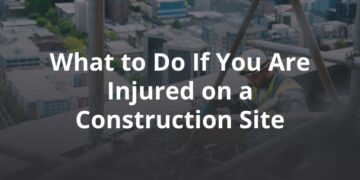After an accident or personal injury, you’ll primarily focus on your medical care and healing from your injuries. However, at some point, you may want to receive compensation for your injuries and financial losses.
Most personal injury claims are settled through negotiations with the at-fault party. For example, most car accident cases are resolved with an insurance settlement. Settlement negotiations often begin with a settlement demand letter.
What Is a Settlement Demand Letter in an Austin Personal Injury Case?
A settlement demand letter is a formal document you send to the insurance company representing the at-fault party. The demand letter tells the insurance company how much you want to resolve your personal injury claim.
What Is Included in a Settlement Demand Letter for a Personal Injury Claim?
Each demand letter is customized for the specific case. You can find a demand letter example online.
However, the demand letter samples you find online might not contain the correct information you need for your case. Instead, a demand letter from an attorney contains all the information the insurance company needs to decide whether to pay your claim.
Typically, a settlement demand letter includes sections that discuss the following:
- The parties involved in the accident or personal injury case, including their insurance providers.
- A discussion of the facts of the case or a summary of how the injury occurred.
- Details of the types of injuries you sustained and the extent of the injuries, such as whether you sustained a permanent impairment.
- An accounting of the damages you sustained. Damages include economic damages, such as out-of-pocket expenses, lost wages, and medical bills. Also included are your non-economic damages discussing your pain and suffering.
- The lawyer’s analysis of the evidence, case law, and statutes that prove the other party caused your injury and is financially liable for your damages.
- The amount you will accept to release the parties from further liability for the accident, your injuries, and your damages.
An attorney includes supporting documents and evidence, such as medical records, employment records, evidence of expenses, and expert opinions. The attachments an Austin personal injury lawyer includes with the letter are planned strategically to improve the chances the insurance company accepts the settlement offer.
What Happens After You Send a Settlement Demand Letter for Your Personal Injury Case?
The insurance company might take several weeks to consider your offer to settle the claim. The company has three choices:
- Decline your settlement offer without making a counteroffer. The company denies it has any liability for your claim.
- Decline your settlement offer and make a counteroffer. The counteroffer is for a lower amount.
- Accept the settlement offer. In this case, you sign a settlement agreement releasing all claims in exchange for the settlement amount.
If the insurance company denies liability, you might need to pursue a claim through the court by filing a personal injury lawsuit.
In many cases, the company makes a counteroffer. The counteroffer might be for an amount you and your lawyer believe is fair for your case. However, your attorney and the insurance company might negotiate back and forth until they agree on a settlement amount.
Things To Remember When Writing a Settlement Demand Letter for an Austin Personal Injury Case
A well-written demand letter can significantly increase your chance of receiving adequate compensation for your personal injury claim. If you decide to write a settlement demand letter without a lawyer, things to keep in mind include the following:
- Demand letters should be concise but include sufficient details to argue your case. The length of the demand letter should compare to the size of your injury claim. Smaller claims do not require lengthy letters and packages.
- Confirm receipt of your demand letter with the insurance company. Put a date in the letter for an expected response, such as 30 days. If you do not receive a response by that time, call the insurance adjuster to check the status of the offer.
- Highlight the facts of your case, especially the severity of your injuries and the extent of your damages. However, avoid the overuse of underlining, bold type, all caps, and italics.
- It might be better to let the insurance company make an offer unless you know how much your case is worth. Instead of demanding a specific amount, say that you look forward to their settlement offer after they review your letter.
- Include critical facts that make your case worse than other cases. For example, requiring extended physical therapy because the fracture was complex and required substantial repair by the surgeon.
- If you make a demand, demand the full insurance policy limits. In most cases, the company will counteroffer for a lower amount. Therefore, calculate the minimum amount you will accept so you can quickly respond with a counteroffer or acceptance.
If you are unsure of the legal basis for holding a party liable for damages, do not understand the damages you may receive, or are unsure how much your damages are worth, it would be wise to seek legal advice before writing a demand letter.
Austin personal injury lawyers offer free consultations. Therefore, it does not cost anything to talk with an attorney to ensure you are not accepting a settlement amount that is less than fair.
Contact Our Personal Injury Law Firm in Austin, TX
If you’ve been injured in an accident in Austin and need legal help, contact our Austin personal injury lawyers at FVF Law to schedule a free consultation with our team.
FVF Law
3101 Bee Caves Rd #301, Austin, TX 78746, United States
(512) 982-9328





